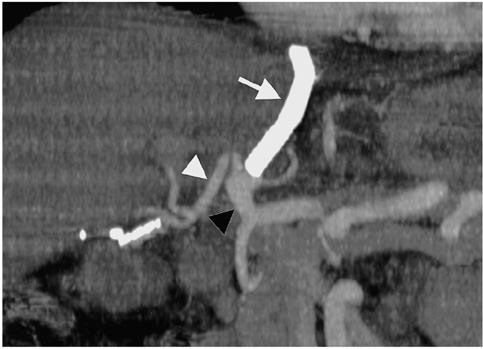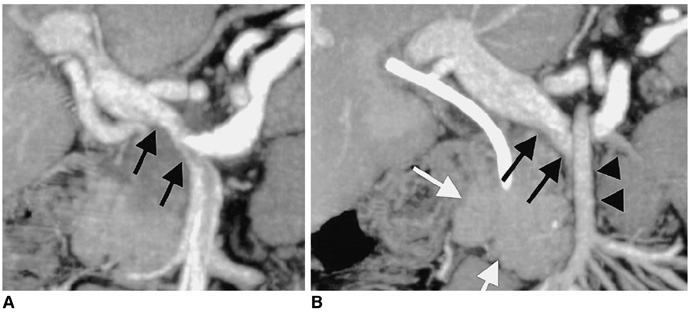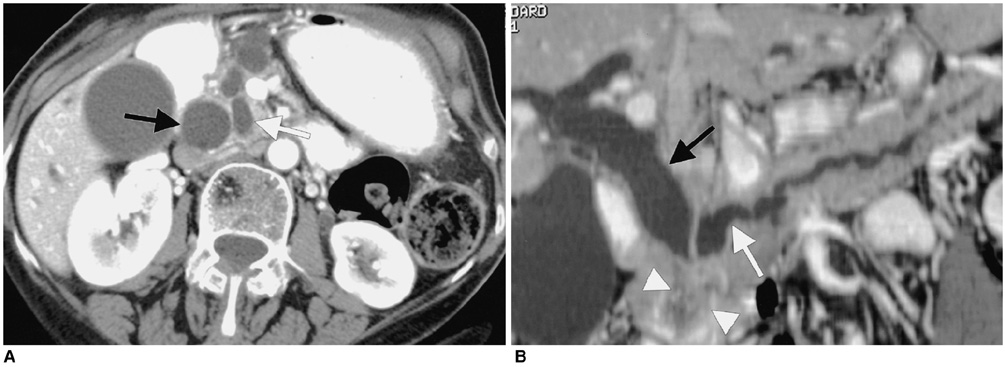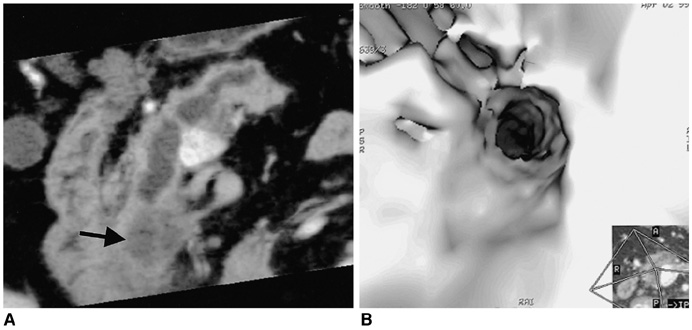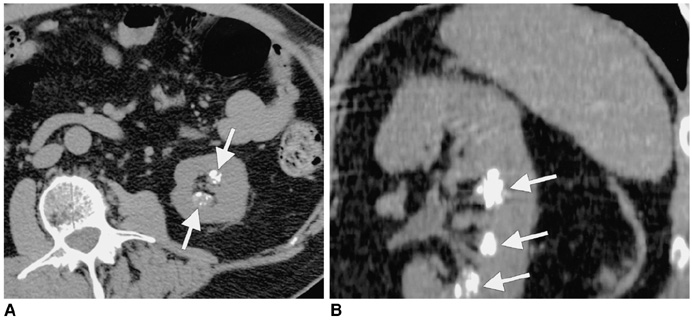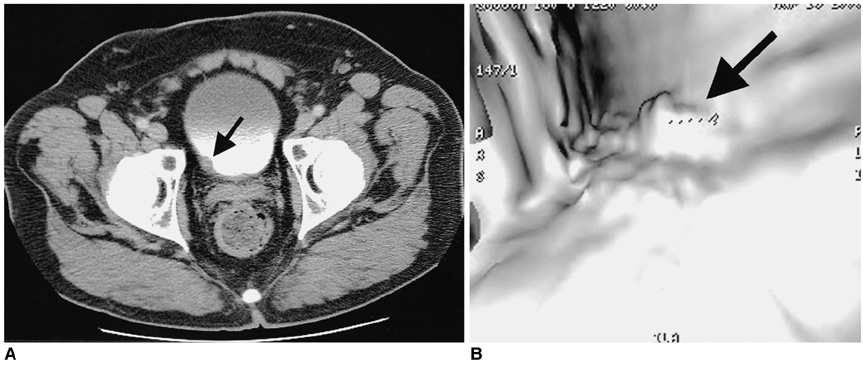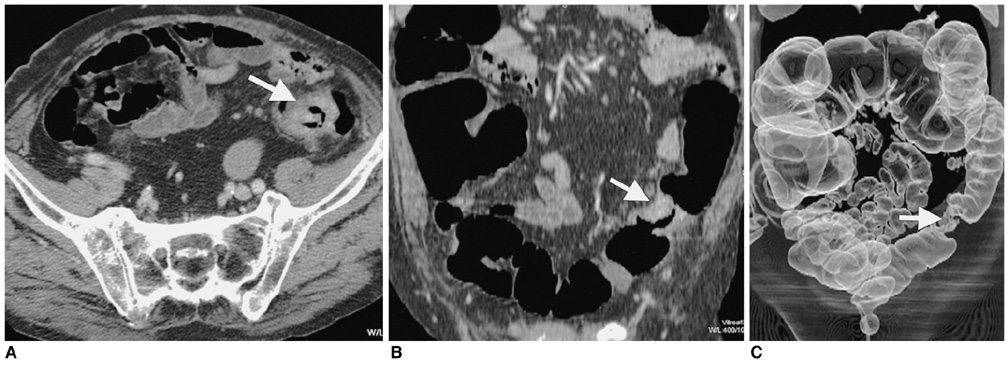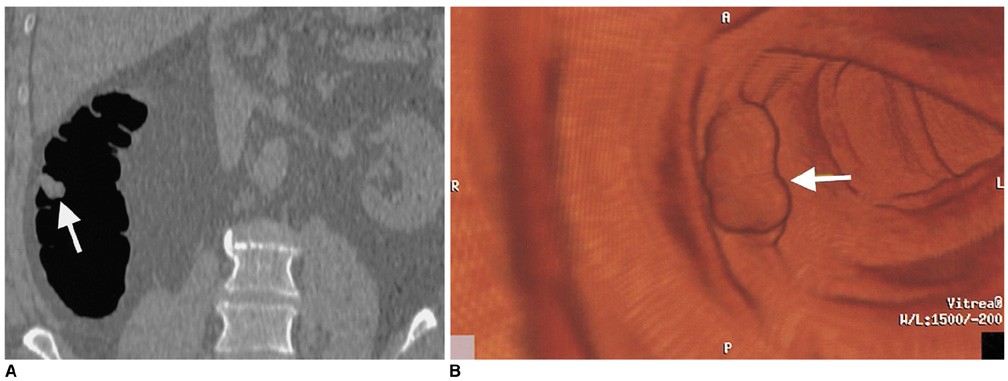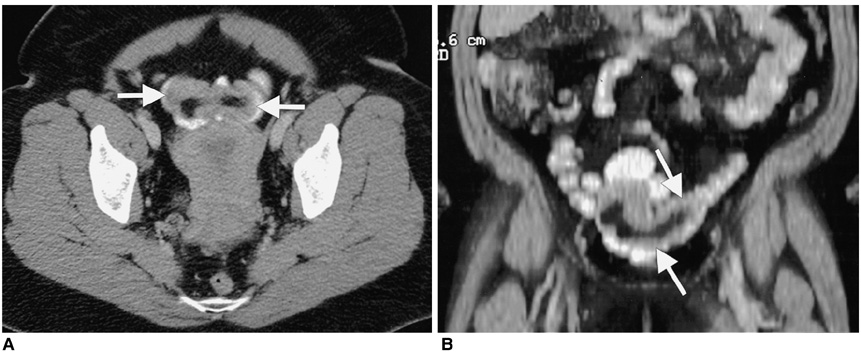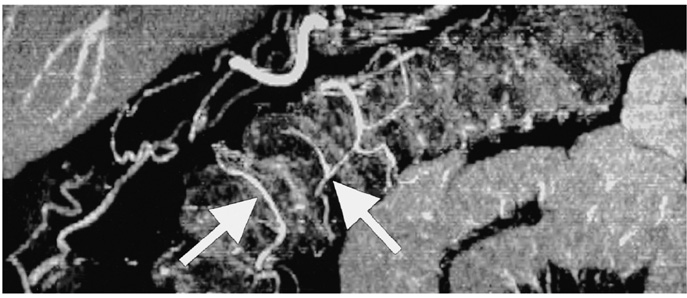Korean J Radiol.
2004 Mar;5(1):55-67. 10.3348/kjr.2004.5.1.55.
Techniques, Clinical Applications and Limitations of 3D Reconstruction in CT of the Abdomen
- Affiliations
-
- 1Division of Abdominal Imaging and Intervention, Department of Radiology, Massachusetts General Hospital and Harvard Medical School. mmaher@partners.org
- KMID: 1066246
- DOI: http://doi.org/10.3348/kjr.2004.5.1.55
Abstract
- Enhanced z-axis coverage with thin overlapping slices in breath-hold acquisitions with multidetector CT (MDCT) has considerably enhanced the quality of multiplanar 3D reconstruction. This pictorial essay describes the improvements in 3D reconstruction and technical aspects of 3D reconstruction and rendering techniques available for abdominal imaging. Clinical applications of 3D imaging in abdomen including liver, pancreaticobiliary system, urinary and gastrointestinal tracts and imaging before and after transplantation are discussed. In addition, this article briefly discusses the disadvantages of thin-slice acquisitions including increasing numbers of transverse images, which must be reviewed by the radiologist.
Keyword
MeSH Terms
-
Adult
Aged
Biliary Tract/radiography
Female
Gastrointestinal Tract/radiography
Human
Image Processing, Computer-Assisted/*methods
Imaging, Three-Dimensional
Liver/radiography
Liver Transplantation/radiography
Male
Middle Aged
Pancreas/radiography
Radiography, Abdominal/*methods
Tomography, X-Ray Computed/*methods
Urography/methods
Figure
Cited by 1 articles
-
Three-dimensional CT angiography of the canine hepatic vasculature
Yucheol Jeong, Changyun Lim, Sunkyoung Oh, Joohyun Jung, Jinhwa Chang, Junghee Yoon, Mincheol Choi
J Vet Sci. 2008;9(4):407-413. doi: 10.4142/jvs.2008.9.4.407.
Reference
-
1. Hu H, He HD, Foley WD, Fox SH. Four multidetector-row helical CT: image quality and volume coverage speed. Radiology. 2000. 215:55–62.2. Wigmore SJ, Redhead DN, Yan XJ, et al. Virtual hepatic resection using three-dimensional reconstruction of helical computed tomography angioportograms. Ann Surg. 2001. 233:221–226.3. Kamel IR, Kruskal JB, Keogan MT, Goldberg SN, Warmbrand G, Raptopoulos V. Multidetector CT of potential right-lobe liver donors. AJR Am J Roentgenol. 2001. 177:645–651.4. Bogetti JD, Herts BR, Sands MJ, Carroll JF, Vogt DP, Henderson JM. Accuracy and utility of 3-dimensional computed tomography in evaluating donors for adult living related liver transplants. Liver Transpl. 2001. 7:687–692.5. Rubin GD, Beaulieu CF, Argiro V, et al. Perspective volume rendering of CT and MR images: applications for endoscopic imaging. Radiology. 1996. 199:321–323.6. Caoili EM, Cohan RH, Korobkin M, et al. Urinary tract abnormalities: initial experience with multi-detector row CT urography. Radiology. 2002. 222:353–360.7. Cody DD. AAPM/RSNA physics tutorial for residents: topics in CT. Image processing in CT. RadioGraphics. 2002. 22:1255–1268.8. O'Malley ME, Boland GW, Wood BJ, Fernandez-del Castillo C, Warshaw AL, Mueller PR. Adenocarcinoma of the head of the pancreas: determination of surgical unresectability with thin-section pancreatic-phase helical CT. AJR Am J Roentgenol. 1999. 173:1513–1518.9. Takeshita K, Furui S, Yamauchi T, et al. Minimum intensity projection image and curved reformation image of the main pancreatic duct obtained by helical CT in patients with main pancreatic duct dilation. Nippon Igaku Hoshasen Gakkai Zasshi. 1999. 59:146–148.10. Park SJ, Han JK, Kim TK, Choi BI. Three-dimensional spiral CT cholangiography with minimum intensity projection in patients with suspected obstructive biliary disease: comparison with percutaneous transhepatic cholangiography. Abdom Imaging. 2001. 26:281–286.11. Schreyer HH, Uggowitzer MM, Ruppert-Kohlmayr A. Helical CT of the urinary organs. Eur Radiol. 2002. 12:575–591.12. Marukawa K, Horiguchi J, Shigeta M, Nakamoto T, Usui T, Ito K. Three dimensional navigator for retroperitoneal laparoscopic nephrectomy using multidetector row computerized tomography. J Urol. 2002. 168:1933–1936.13. Song JH, Francis IR, Platt JF, et al. Bladder tumor detection at virtual cystoscopy. Radiology. 2001. 218:95–100.14. Kim JK, Ahn JH, Park T, Ahn HJ, Kim CS, Cho KS. Virtual cystoscopy of the contrast material-filled bladder in patients with gross hematuria. AJR Am J Roentgenol. 2002. 179:763–768.15. Horton KM, Fishman EK. Volume-rendered 3D CT of the mesenteric vasculature: normal anatomy, anatomic variants, and pathologic conditions. RadioGraphics. 2002. 22:161–172.
- Full Text Links
- Actions
-
Cited
- CITED
-
- Close
- Share
- Similar articles
-
- Surface Functionalization of Three-Dimensional Printed Scaffold for Biomedical Application
- Applications of Three-Dimensional Printing in Cardiovascular Surgery: A Case-Based Review
- Application of 3-dimensional printing implants for bone tumors
- Fabrication of 3D-Printed Implant for Two-Stage Ear Reconstruction Surgery and Its Clinical Application
- A Review of Current Clinical Applications of Three-Dimensional Printing in Spine Surgery



